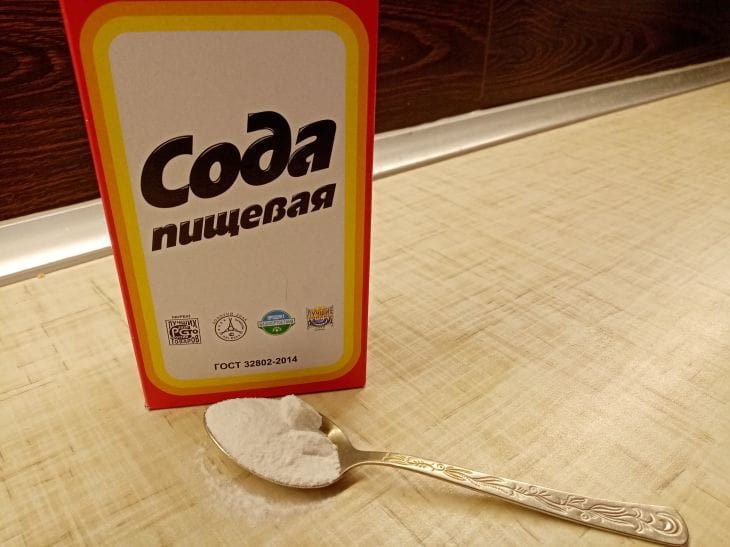- Chemical aspect: how soda changes the properties of tea
- Historical context: from nomadic traditions to modern times
- Experiment: How to Test the Effect of Soda at Home
- Modern research and expert opinions
- Alternatives to soda: how else to soften the bitterness
- Cultural significance: more than just a drink
- Conclusion
Why do they add soda to green tea: only a few will answer
Green tea, known for its antioxidant properties, is sometimes prepared with the addition of baking soda.
This practice is common in regions with hard water, such as Central Asia.
However, behind this non-obvious combination lies centuries of experience, chemical laws and cultural traditions that are worth studying in more detail.
Chemical aspect: how soda changes the properties of tea
Baking soda (sodium bicarbonate) creates an alkaline environment (pH 8-9), which neutralizes tannins and catechins, which are responsible for bitterness.
For example, tannin, interacting with soda, forms more soluble compounds that soften the taste.

Research (such as this 2017 study by Japanese scientists from Kyoto University) confirms that at pH levels above 7, epigallocatechin gallate (EGCG), the main antioxidant in tea, becomes more stable.
This not only preserves the bright green color of the drink, but also slows down oxidation, extending the shelf life of the brewed tea.
However, an alkaline environment also affects other components. For example, B vitamins, especially thiamine (B1) and riboflavin (B2), are destroyed at pH above 7.5.
This is a compromise between preserving antioxidants and losing some of the beneficial substances.
Interestingly, caffeine is released more slowly under alkaline conditions, making the drink less "harsh" in its effects.
Historical context: from nomadic traditions to modern times
In Uzbekistan and Tajikistan, traditional "kok-tea" is brewed in copper pots with the addition of soda and milk. This method arose due to the characteristics of local water, saturated with calcium and magnesium salts.
Soda softens water, preventing scale formation in dishes, and milk fats bind residual bitterness, creating a velvety taste.
Interestingly, in Tibet, yak butter plays a similar role, added to tea to neutralize astringency.
In China, the birthplace of green tea, soda is not used - they prefer soft spring water or add lemon, which, on the contrary, increases acidity.
This highlights that brewing traditions are closely linked to the ecological conditions of the region.
Experiment: How to Test the Effect of Soda at Home
To understand the difference, conduct an experiment:
Sample with soda : 0.5 g of soda (on the tip of a knife) per liter of water.
Result : The drink acquires a golden-green hue, the taste is soft, with a slightly sweet note.
Tip : Use loose tea varieties (for example, “long leaves” from Georgia) - they open up better in an alkaline environment.
Sample without soda :
Result : The color becomes olive-brown, the taste is astringent, with a pronounced bitterness.
Important! Excess soda (more than 1 g/l) leads to an unpleasant “soapy” taste and destroys up to 30% of vitamins. For accuracy, you can use pH strips: the ideal range is 7.5–8.5.
Modern research and expert opinions
According to the Institute of Nutrition of the Russian Academy of Medical Sciences , moderate use of soda (up to 0.7 g/l) does not harm health, but people with high stomach acidity should be careful: alkaline tea can disrupt the pH balance of the gastrointestinal tract.
Tea master Lilia Stein notes:
"Soda is a tool that is only appropriate in certain conditions. For elite varieties like Bi Lo Chun, it is unnecessary, but for everyday tea drinking in regions with hard water, it is irreplaceable."
Alternatives to soda: how else to soften the bitterness
Water filtration : removes hardness salts while maintaining neutral pH.
Adding citrus : Citric acid neutralizes tannins, enhancing the aroma.
Milk or cream : The proteins bind the tannins, as in classic English tea.
Brewing at low temperature (70–80°C): reduces bitterness extraction.
Cultural significance: more than just a drink
In Central Asia, "kok-chai" is a symbol of hospitality. It is served in bowls, accompanied by flatbreads and dried fruits.
Adding soda here is not just a culinary technique, but part of a ritual that emphasizes respect for the guest.
In Uzbekistan, there are even “tea houses” where the preparation process turns into a meditative act using ancient copper samovars.
Conclusion
Adding soda to green tea is a centuries-old compromise between chemistry, culture and ecology. It teaches us that even a minor ingredient can reveal new facets of a familiar drink.
However, as in any art, moderation is important here: a pinch of soda will turn tea drinking into pleasure, but too much will spoil the taste.
Experiment consciously and you will discover a world of nuances hidden in a simple tea leaf.
